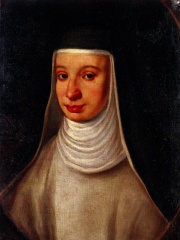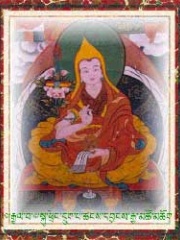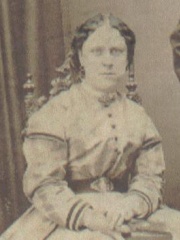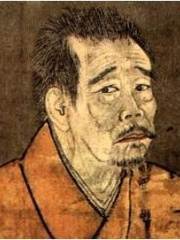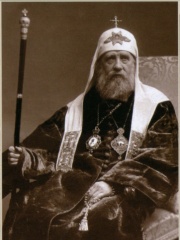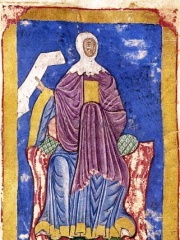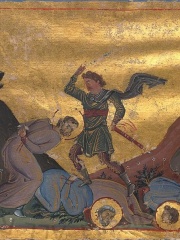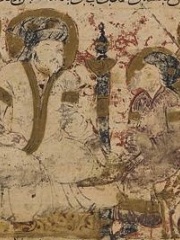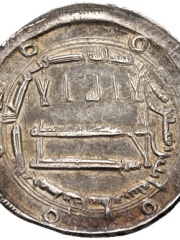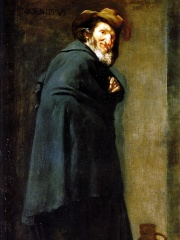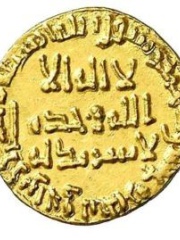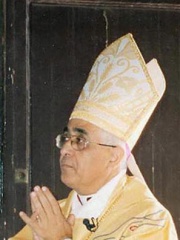RELIGIOUS FIGURE
Balak
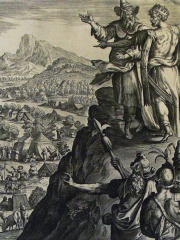
 Balak
Balak
Balak (Hebrew: בָּלָק Bālāq) was a king of Moab described in the Book of Numbers in the Hebrew Bible, where his dealings with the prophet Balaam are recounted. Balak tried to engage Balaam for the purpose of cursing the migrating Israelite community. On his journey to meet the princes of Moab, Balaam is stopped by an angel of the lord after beating his donkey. Read more on Wikipedia
Since 2007, the English Wikipedia page of Balak has received more than 389,659 page views. His biography is available in 21 different languages on Wikipedia (up from 20 in 2019). Balak is the 1,072nd most popular religious figure (up from 5,416th in 2019), the 10th most popular biography from Jordan (up from 11th in 2019) and the 3rd most popular Jordanian Religious Figure.
Memorability Metrics
390k
Page Views (PV)
57.98
Historical Popularity Index (HPI)
21
Languages Editions (L)
7.19
Effective Languages (L*)
1.86
Coefficient of Variation (CV)
Page views of Balaks by language
Among RELIGIOUS FIGURES
Among religious figures, Balak ranks 1,072 out of 2,238. Before him are Maria Celeste, 6th Dalai Lama, Annie Chapman, Antipope Philip, Antipope Gregory VI, and Ikkyū. After him are Patriarch Tikhon of Moscow, Urraca of Zamora, Nahshon, Pamphilus of Caesarea, Elizabeth Blount, and Anthony Mary Claret.
Most Popular Religious Figures in Wikipedia
Go to all Rankings
Maria Celeste
1600 - 1634
HPI: 58.04
Rank: 1,066
6th Dalai Lama
1683 - 1706
HPI: 58.03
Rank: 1,067
Annie Chapman
1841 - 1888
HPI: 58.02
Rank: 1,068
Antipope Philip
800 - 769
HPI: 58.02
Rank: 1,069
Antipope Gregory VI
1000 - 1018
HPI: 57.99
Rank: 1,070
Ikkyū
1394 - 1481
HPI: 57.98
Rank: 1,071
Balak
HPI: 57.98
Rank: 1,072
Patriarch Tikhon of Moscow
1865 - 1925
HPI: 57.98
Rank: 1,073
Urraca of Zamora
1033 - 1101
HPI: 57.98
Rank: 1,074
Nahshon
HPI: 57.96
Rank: 1,075
Pamphilus of Caesarea
240 - 309
HPI: 57.95
Rank: 1,076
Elizabeth Blount
1500 - 1539
HPI: 57.94
Rank: 1,077
Anthony Mary Claret
1807 - 1870
HPI: 57.92
Rank: 1,078

In Jordan
Among people born in Jordan, Balak ranks 10 out of 44. Before him are As-Saffah (722), Al-Mahdi (744), Menippus (-290), Abdullah II of Jordan (1962), Nicomachus (60), and Philodemus (-110). After him are Simon bar Giora (100), Abu Musab al-Zarqawi (1966), Jair (-1000), Meleager of Gadara (-130), Phinehas (-1300), and Fouad Twal (1940).
Others born in Jordan
Go to all Rankings
As-Saffah
722 - 754
HPI: 68.04
Rank: 4
Al-Mahdi
744 - 785
HPI: 64.80
Rank: 5
Menippus
290 BC - 260 BC
HPI: 62.53
Rank: 6
Abdullah II of Jordan
1962 - Present
HPI: 61.70
Rank: 7
Nicomachus
60 - 120
HPI: 61.23
Rank: 8
Philodemus
110 BC - 35 BC
HPI: 59.00
Rank: 9
Balak
HPI: 57.98
Rank: 10
Simon bar Giora
100 - 70
HPI: 57.00
Rank: 11
Abu Musab al-Zarqawi
1966 - 2006
HPI: 56.79
Rank: 12
Jair
1000 BC - Present
HPI: 56.61
Rank: 13
Meleager of Gadara
130 BC - 60 BC
HPI: 56.22
Rank: 14
Phinehas
1300 BC - Present
HPI: 54.84
Rank: 15
Fouad Twal
1940 - Present
HPI: 52.63
Rank: 16

Among RELIGIOUS FIGURES In Jordan
Among religious figures born in Jordan, Balak ranks 3. Before him are Aaron (-1396) and Al-Mansur (714). After him are Jair (-1000), Phinehas (-1300), Fouad Twal (1940), and Maroun Elias Nimeh Lahham (1948).

Aaron
1396 BC - 1274 BC
HPI: 84.14
Rank: 1
Al-Mansur
714 - 775
HPI: 69.09
Rank: 2
Balak
HPI: 57.98
Rank: 3
Jair
1000 BC - Present
HPI: 56.61
Rank: 4
Phinehas
1300 BC - Present
HPI: 54.84
Rank: 5
Fouad Twal
1940 - Present
HPI: 52.63
Rank: 6
Maroun Elias Nimeh Lahham
1948 - Present
HPI: 42.99
Rank: 7

